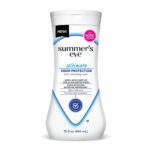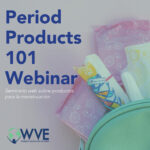New Patent Analysis Shows Toxic Risk From Tampons
Women’s Voices examines harmful chemicals in common products
FOR IMMEDIATE RELEASE: July 15, 2014
CINNCINATI—New research and analysis by Women’s Voices for the Earth about toxic chemicals in tampons examines what ingredients comprise this product used by a vast majority of women nationwide, including specific toxic chemicals that may be found in the product’s absorptive materials, as well as additives and fragrances that may put women’s health at risk.
According to WVE’s director of science and research, Alexandra Scranton, the potential impact of toxic chemical exposure from tampons on health is significant because they are used internally, in direct contact to some of the most sensitive and absorptive skin on a woman’s body.
“Despite the widespread use of tampons by numerous women, relatively little research has been conducted to assess the health impacts of chemical exposure from these products,” Scranton said.
Vaginal tissue is lined with permeable mucous membranes, which protect the body from bacteria, but which can also easily absorb or be irritated by other chemicals, Scranton said, adding that vaginal tissues are filled with blood vessels and thus are a direct route for chemicals to be absorbed into the bloodstream. She cited a study by the American Journal of Obstetrics and Gynecology that showed that hormone chemicals, like estrogen, are absorbed vaginally at 10-80 times the rate that the same dose would be absorbed orally.
What’s in a Tampon Anyway?
Scranton’s research shows that while manufacturers disclose the main components of tampons, the list usually looks something like this: “Rayon and/or cotton fiber, polyethylene overwrap, cotton cord, cardboard applicator.” What’s missing is the disclosure of the other potential absorptive materials, additives, fragrances, and potential contaminants that can be found in tampons. Public patent documents acquired by WVE and held by tampon and pad manufacturer Procter & Gamble (US Patent #6,840,927) indicate a number of other chemicals they may be adding to tampons, including:
- Creped cellulose wadding
- Meltblown polymers
- Chemically-stiffened fibers, polyester fibers, peat moss, foam
- Tissue wraps and laminates
- Super absorbent gels and open-celled foams
Examples of additives that may be used in tampons include:
- Myreth-3-myristate (as lubricant) (US Patent # 5,533,990 )
- Natural and synthetic zeolites (as odor-absorbing particles) (US Patent # 5,161,686)
- Alcohol ethoxylates
- Glycerol esters, polysorbate-20 (as surfactants to disperse fragrance)
- Unnamed anti-bacterial agents (US Patent # 7,160,279)
Scented tampons are infused with fragrance, which could be made up of combinations of any of nearly 3,000 different chemicals. Examples of potentially harmful chemicals that have been found in fragrance include:
- Cancer-causing chemicals such as: styrene, pyridine, methyleugenol, and butylated hydroxyanisole
- Phthalates of concern (DEP and DINP)
- Synthetic musks (potential hormone disruptors)
- Numerous allergens.[i]
WVE’s analysis also showed that contaminants can occur in tampons from the processing of individual components. Dioxins and furans are contaminants that come from chlorine bleaching of cotton and have been linked to cancer, reproductive harm, and endocrine disruption.[ii] Additional studies have confirmed that tampons contain low levels of dioxins and furans. While the studies generally conclude that the health risk from exposure to dioxins and furans from tampon use is insignificant compared to the risk of exposure to dioxins and furans we get from eating food, Scranton said women deserve to know all of the ingredients they are inserting into their bodies.[iii],[iv]
“The discussion of the impacts of exposure did not address the application or location of the exposure,” she explained. “While the overall contribution of dioxins and furans to a woman’s blood stream may be minor compared to contributions from the food supply, the health impacts of direct exposure of dioxins and furans to vaginal tissue needs greater examination.”
Lastly, WVE’s research analysis shows pesticide residues can contaminate tampons made from traditionally grown cotton,[v] including Procymidon, which EPA has determined to be a “probable human carcinogen,” and piperonyl butoxide, which has been determined to be a “possible human carcinogen.”
“The biggest problem is the lack of research on this topic,” Scranton said. “Given the widespread use of these products by women across their lifetime, greater scrutiny is clearly needed.”
WVE suggests women concerned about toxic chemicals in feminine products purchase unscented, unbleached tampons, and look for companies – like the ones in their “No Secrets” feminine care coalition of companies – that list all of their ingredients and make products without toxic chemicals.
MEDIA CONTACTS:
Alexandra Scranton, alexs@womensvoices.org, (406) 543-3747, office
Founded in 1995, Women’s Voices for the Earth amplifies women’s voices to eliminate the toxic chemicals that harm our health and communities. With thousands of members across the United States, WVE changes corporate practices, holds government accountable, and works to ensure a toxic-free future for all. Learn more atwomensvoices.org.
Sources
[i] International Fragrance Association (IFRA) (2013) IFRA Survey: Transparency List. Available at: http://www.ifraorg.org/en-us/ingredients
[ii] DeVito, MJ and Schecter, A. (2002) Exposure assessment to dioxins from the use of tampons and diapers. Environmental Health Perspectives, Vol. 110, No. 1, pp:23-28. Jan. 2002.
[iii] DeVito, MJ and Schecter, A. (2002) Exposure assessment to dioxins from the use of tampons and diapers. Environmental Health Perspectives, Vol. 110, No. 1, pp:23-28. Jan. 2002.
[iv] Archer JC., Mabry-Smith R., Shojaee S., Threet J., Eckert JJ. and Litman VE. (2005) Dioxin and Furan Levels Found in Tampons. Journal of Women’s Health. Vol. 14, No. 4. 2005.
[v][v] Naturally Savvy (2013). http://naturallysavvy.com/care/is-there-pesticide-residue-on-your-tampons-our-independent-testing-gets-specific





